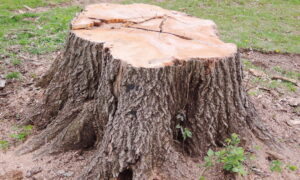Removing a tree is no small job, and it’s often more complicated than it initially seems. Whether it’s for safety reasons, landscaping, or managing overgrowth, understanding when and how to tackle tree removal can save you time, money, and extra headaches.
This blog post will walk you through everything you need to know about tree removal, from identifying when it’s necessary to navigating the removal process safely and efficiently. By the end, you’ll be equipped with the knowledge to make informed decisions about removing trees on your property.
When is Tree Removal Necessary?
Trees are essential to our environment, providing clean air, shade, and a habitat for wildlife. However, recognizing when a tree needs to be removed is critical for the safety and health of your property. Below are some situations where removal might be necessary.
1. The Tree is Dead or Dying
A dead tree is not just an eyesore; it’s also a safety hazard. Weak or decaying branches can fall unexpectedly, and the tree itself may collapse, causing significant damage to property or even posing risks to human life.
Signs of a dead or decaying tree include brown, brittle leaves, bark falling off, or fungus growing on the trunk. If you’re unsure whether a tree is dead, consult with an arborist for an expert opinion.
2. Structural Damage or Disease
Certain tree diseases, such as Dutch elm disease or oak wilt, can spread quickly and affect other trees or plants in your yard. Similarly, structural damage caused by pests, storms, or construction can weaken the tree, making it unsafe.
By identifying these problems early, you might save nearby vegetation by removing the affected tree.
3. It’s Too Close to Structures
Trees growing too close to homes, fences, or utility lines are potential hazards. Overgrown roots can damage your foundation, plumbing, or sidewalks, while branches encroaching on power lines can create fire risks.
If trimming doesn’t address the issue, tree removal might be the best course of action.
4. It’s Preventing Landscaping or Development
Sometimes, a tree stands in the way of your landscaping or construction plans. Whether you’re building an extension or laying down a patio, removing the tree might open up opportunities to optimize your outdoor space.
The Tree Removal Process Step by Step
Now that you understand when removal is necessary, it’s time to explore the best way to handle the process. While some small trees can be removed as a do-it-yourself project, most tree removals should be handled by professionals for safety and efficiency.
Step 1: Assess the Tree
The first step is to evaluate the tree itself. Determine its size, health, and proximity to nearby structures or power lines. This will help you understand the complexity of the removal process and whether professional help is necessary.
Step 2: Obtain the Proper Permits
Did you know that removing a tree often requires a permit from your local government? Many municipalities have regulations protecting certain tree species or have guidelines regarding tree removal. Make sure you check with your local authorities before proceeding.
Step 3: Hire a Certified Arborist
For most trees, hiring a professional tree removal service is the safest choice. Tree removal specialists have the experience, tools, and insurance needed to cut down and dispose of trees efficiently.
Search for certified arborists in your area. They’ll not only remove the tree but can also provide advice on maintaining the health of surrounding vegetation.
Step 4: Remove the Tree Safely
The physical removal typically involves cutting the tree into sections, starting from the top, and lowering pieces safely to the ground. Depending on the size and location of the tree, heavy machinery like cranes or bucket trucks might be needed.
Step 5: Stump Grinding or Removal
Once the tree is down, you’ll need to decide what to do with the stump. Leaving stumps can invite pests like termites or create obstacles for landscaping. Stump grinding or stump removal ensures a clean and usable yard.
Cost of Tree Removal
Understanding the costs involved is crucial for budgeting. Tree removal prices can vary widely based on several factors, including the tree’s height, condition, location, and difficulty of the job. Here’s a general breakdown of what to expect:
- Small trees (under 25 feet): $150–$500
- Medium trees (25–50 feet): $200–$1,000
- Large trees (50–75 feet): $1,000–$3,000
- Extra-large trees (over 75 feet): $2,000+
Keep in mind that additional costs may apply for stump grinding or emergency removals (e.g., after storms).
Why Professional Tree Removal Matters
Attempting to remove a tree on your own can be dangerous. Improper techniques might lead to falling branches, property damage, or injury. Professionals bring essential skills and equipment, including harnesses, chainsaws, and safety gear, to make the process as smooth and risk-free as possible.
Additionally, certified arborists will ensure an eco-friendly approach, often recycling the wood or mulching the branches.
Maintaining a Tree-Free Property
After removing a tree, you’ll want to maintain the open space and prevent future issues with overgrowth or pests. Here are some tips you can follow to keep your yard in top shape.
- Plant Wisely: If you choose to replace the tree, ensure the new plant fits your yard size and sunlight conditions.
- Regular Inspections: Schedule routine checks for tree health and overgrowth around your property.
- Landscape Hygiene: Clear debris and branches to avoid attracting pests.
- Fertilize and Seed: Promote lush grass growth in areas cleared by removal by using fertilizer and lawn seed.
Make an Informed Decision
Whether it’s for safety, landscaping, or property development, tree removal in Aberdeen is a significant decision. With the right preparation and professional help, you can ensure the process is safe, efficient, and eco-friendly.
Need support with tree removal? Consult a certified arborist in your area to assess your needs and take the first step toward transforming your yard.



































